I want to estimate the scale, shape and threshold parameters of a 3p Weibull distribution.
What I've done so far is the following:
Refering to this post, Fitting a 3 parameter Weibull distribution in R
I've used the functions
EPS = sqrt(.Machine$double.eps) # "epsilon" for very small numbers
llik.weibull <- function(shape, scale, thres, x)
{
sum(dweibull(x - thres, shape, scale, log=T))
}
thetahat.weibull <- function(x)
{
if(any(x <= 0)) stop("x values must be positive")
toptim <- function(theta) -llik.weibull(theta[1], theta[2], theta[3], x)
mu = mean(log(x))
sigma2 = var(log(x))
shape.guess = 1.2 / sqrt(sigma2)
scale.guess = exp(mu + (0.572 / shape.guess))
thres.guess = 1
res = nlminb(c(shape.guess, scale.guess, thres.guess), toptim, lower=EPS)
c(shape=res$par[1], scale=res$par[2], thres=res$par[3])
}
to "pre-estimate" my Weibull parameters, such that I can use them as initial values for the argument "start" in the "fitdistr" function of the MASS-Package.
You might ask why I want to estimate the parameters twice... reason is that I need the variance-covariance-matrix of the estimates which is also estimated by the fitdistr function.
EXAMPLE:
set.seed(1)
thres <- 450
dat <- rweibull(1000, 2.78, 750) + thres
pre_mle <- thetahat.weibull(dat)
my_wb <- function(x, shape, scale, thres) {
dweibull(x - thres, shape, scale)
}
ml <- fitdistr(dat, densfun = my_wb, start = list(shape = round(pre_mle[1], digits = 0), scale = round(pre_mle[2], digits = 0),
thres = round(pre_mle[3], digits = 0)))
ml
> ml
shape scale thres
2.942548 779.997177 419.996196 ( 0.152129) ( 32.194294) ( 28.729323)
> ml$vcov
shape scale thres
shape 0.02314322 4.335239 -3.836873
scale 4.33523868 1036.472551 -889.497580
thres -3.83687258 -889.497580 825.374029
This works quite well for cases where the shape parameter is above 1. Unfortunately my approach should deal with the cases where the shape parameter could be smaller than 1.
The reason why this is not possible for shape parameters that are smaller than 1 is described here: http://www.weibull.com/hotwire/issue148/hottopics148.htm
in Case 1, All three parameters are unknown the following is said:
"Define the smallest failure time of ti to be tmin. Then when γ → tmin, ln(tmin - γ) → -∞. If β is less than 1, then (β - 1)ln(tmin - γ) goes to +∞ . For a given solution of β, η and γ, we can always find another set of solutions (for example, by making γ closer to tmin) that will give a larger likelihood value. Therefore, there is no MLE solution for β, η and γ."
This makes a lot of sense. For this very reason I want to do it the way they described it on this page.
"In Weibull++, a gradient-based algorithm is used to find the MLE solution for β, η and γ. The upper bound of the range for γ is arbitrarily set to be 0.99 of tmin. Depending on the data set, either a local optimal or 0.99tmin is returned as the MLE solution for γ."
I want to set a feasible interval for gamma (in my code called 'thres') such that the solution is between (0, .99 * tmin).
Does anyone have an idea how to solve this problem?
In the function fitdistr there seems to be no opportunity doing a constrained MLE, constraining one parameter.
Another way to go could be the estimation of the asymptotic variance via the outer product of the score vectors. The score vector could be taken from the above used function thetahat.weibul(x). But calculating the outer product manually (without function) seems to be very time consuming and does not solve the problem of the constrained ML estimation.
Best regards, Tim


